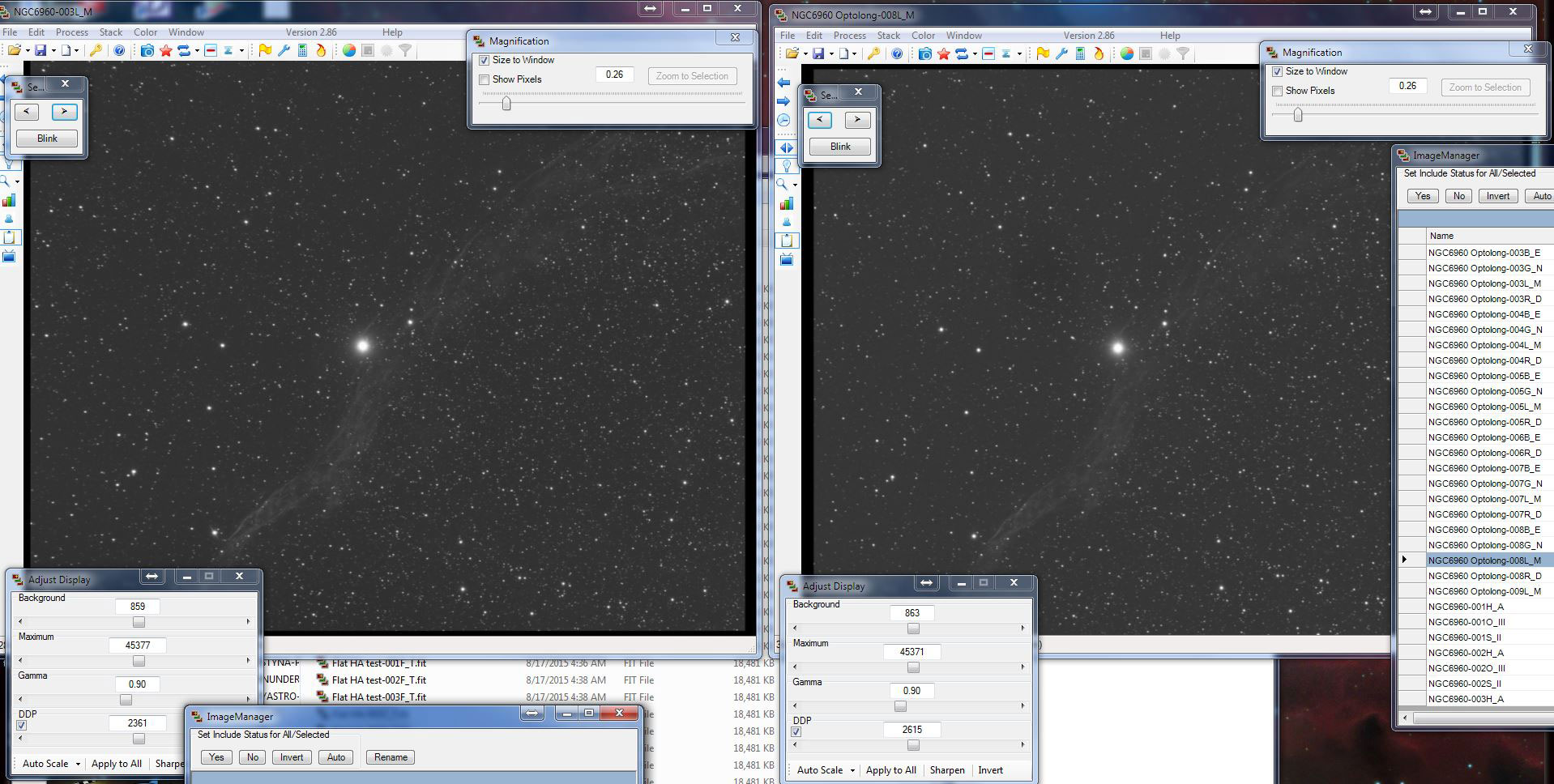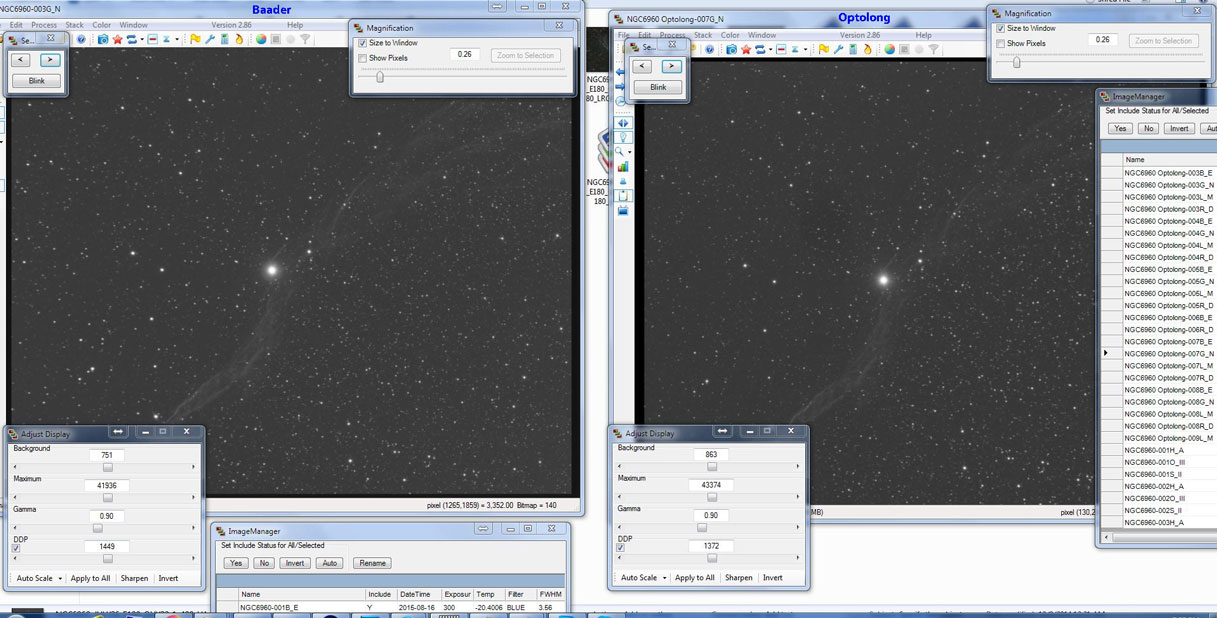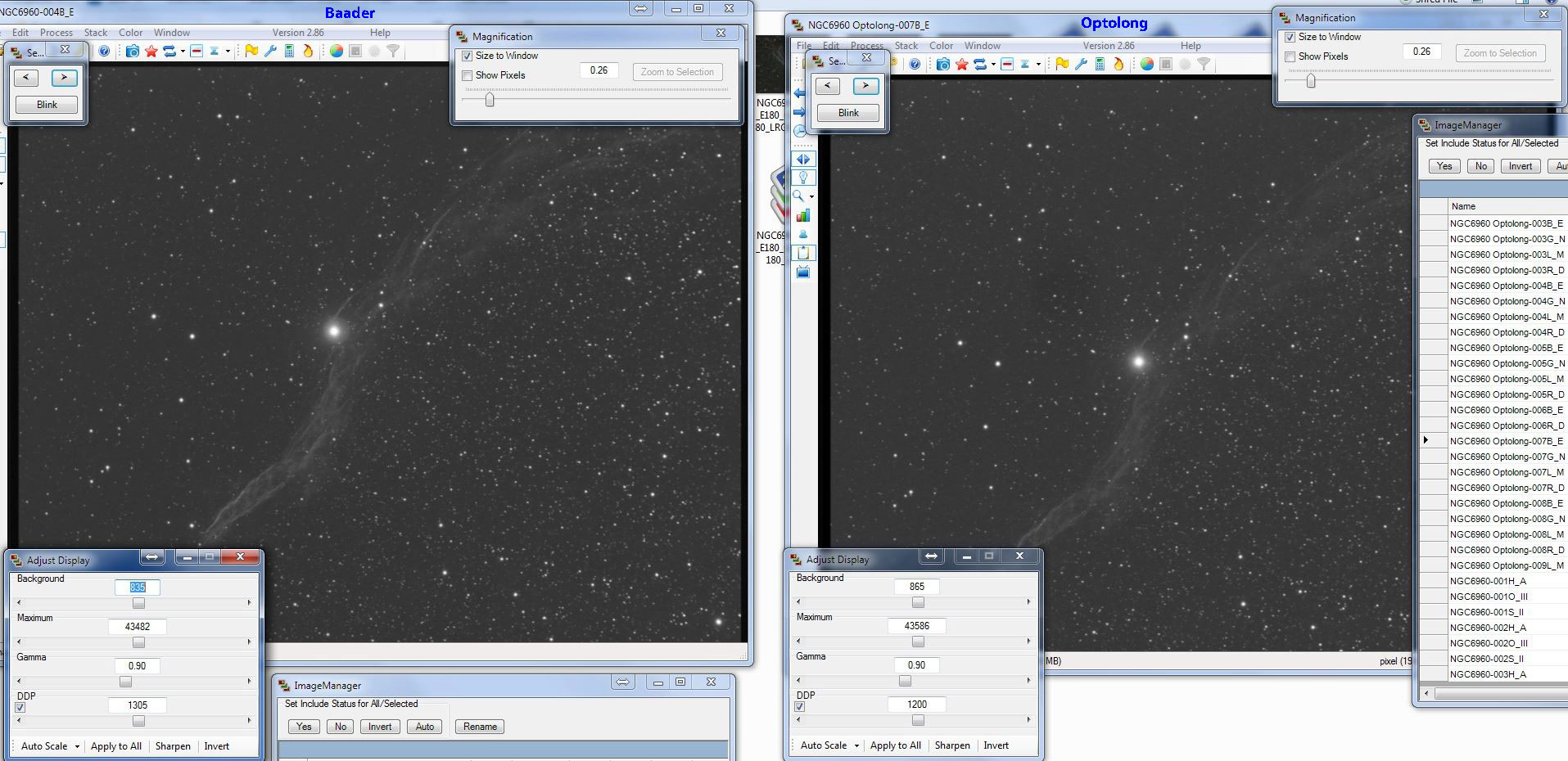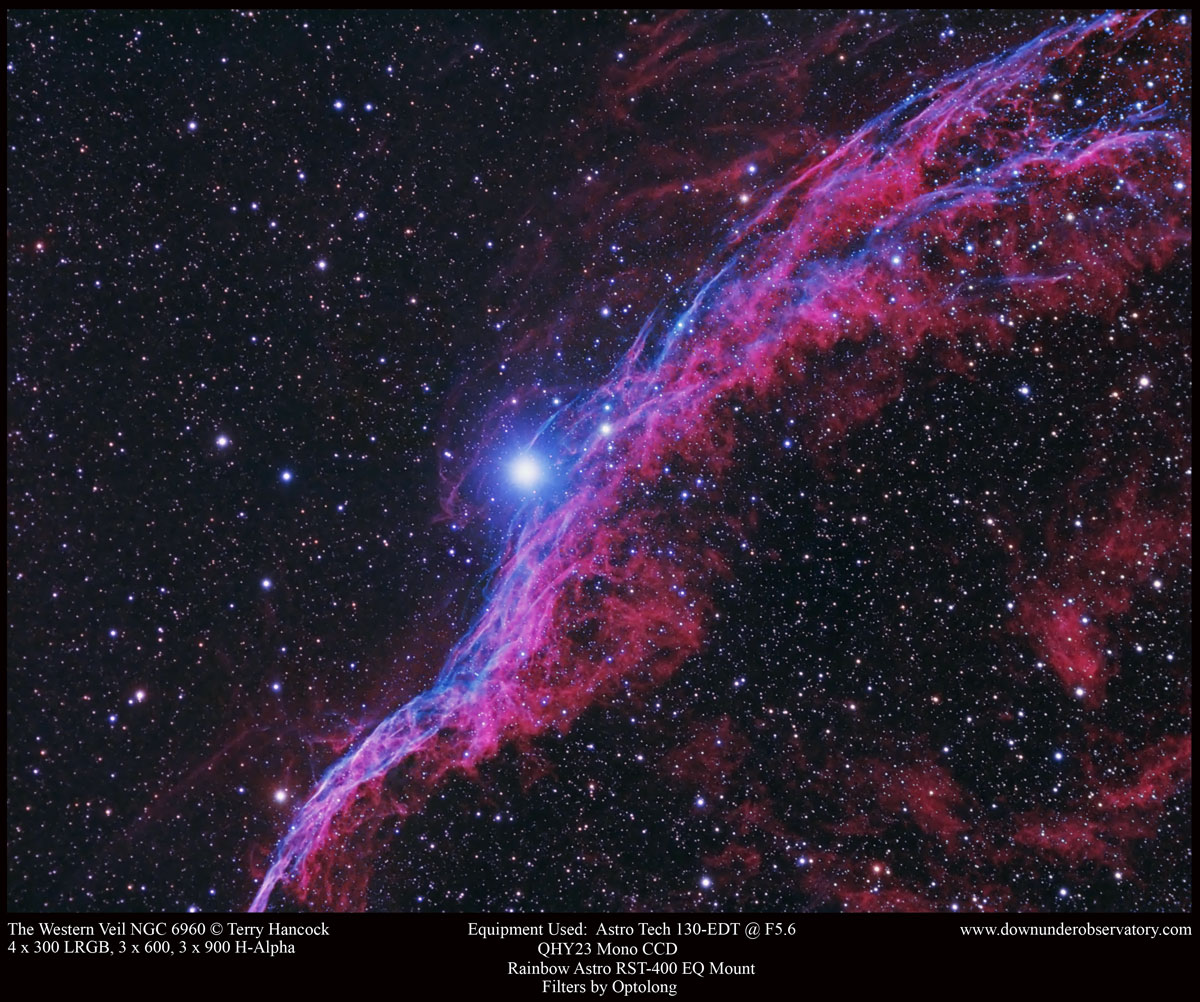Optolong LRGB Filter Testing and Comparison with Baader LRGB Filters
By: Terry Hancock, October 2, 2015
Discuss this article in the forums1. Introduction
I was recently contacted by Optolong, a filter manufacturer in China, who asked me to test their filters. They sent me a set of 36mm unmounted LRGB and a set of 36mm Narrowband Filters (H-Alpha 7nm, OIII and SII 12nm). I was impressed when they arrived; nice packaging and presentation in a similar plastic case to the Baader.
I limited my comparison for LRGB only which was carried out on the 15th and 16th August with similar average seeing conditions. The narrow band filters are not the final version that will be used for comparison. At the time they were only manufacturing them in 12nm pass band. The Baader equivalent is 7nm, which is more the industry standard. Subsequently, they have started producing the narrow band filters in 7nm pass bands. They will have to wait for another day…
Optolong are not new to manufacturing astronomical filters. Established in 1999, they are a subsidiary of Yulong Optics of Kunming City China. Their products include Astronomical Filters, Band pass Filters, Fluorescence Filters, Edge filters, Long pass and Short pass Filters, Beam spliters, and Anti-reflective Coating and Optical Mirrors. They are Quality assurance certified ISO9001.
2. Filter Specifications and Test Setup
Optolong’s literature states:
LRGB Filters OptolongFor the test the 36mm unmounted filters were fitted to a QHYCFW2-M-UltraSlim Filter Wheel. The camera used was a QHY23 Monochrome CCD camera, and the telescope used was an Astro Tech AT130-EDT f/5.6 Apo Refractor.
- German Schott glass 2mm thick enabling parfocal performance
- Anti-reflection coating to eliminate halos
- Steep band pass filters to eliminate UV and IR interference
 Fig 1: Optical spectrum diagram of Optolong LRGB filters (Image courtesy of Optolong)3. Filter Comparisons
Fig 1: Optical spectrum diagram of Optolong LRGB filters (Image courtesy of Optolong)3. Filter Comparisons
I first checked the Minimum and Maximum ADU (Analog to Digital Unit) to help determine if there is any difference in color transmission. Here is the result:
Baader August 15th LUM Minimum 539-772
Maximum 44405-46106
Optolong August 16th LUM Minimum 745-751
Maximum 45050-46088 Fig 2: Minimum and maximum ADU measurements in the Luminance channel
Fig 2: Minimum and maximum ADU measurements in the Luminance channel
RED Minimum 639-784
Maximum 43749-45815
RED Minimum 733-748
Maximum 44891-45787 Fig 3: Minimum and maximum ADU measurements in the Red channel
Fig 3: Minimum and maximum ADU measurements in the Red channel
GREEN Minimum 573-784
Maximum 42253-44262
GREEN Minimum 733-753
Maximum 42150-45189 Fig 4: Minimum and maximum ADU measurements in the Green channel
Fig 4: Minimum and maximum ADU measurements in the Green channel
BLUE Minimum 512-769
Maximum 41932-43622
BLUE Minimum 742-754
Maximum 41773-43586 Fig 5: Minimum and maximum ADU measurements in the Blue channel
Fig 5: Minimum and maximum ADU measurements in the Blue channelBased on the above I find the color transmission to be very similar.
Next I checked for any halos using the bright star 52 Cygnus at the center of the image as reference, and I found that the Baader Green and Blue Filters exhibited a much stronger halo than the Optolong.
Both the Baader and Optolong Luminance and Red filters showed only very faint halos.
I found no difference at all between the Baader and Optolong filters for either sharpness or contrast.
Neither Baader nor Optolong distribute reflections for this test target.
I found both the Baader and Optolong LRGB Filters are parfocal when used with this equipment.
One thing I find strange is that with the Baader Filters the bright star at about 8 o’clock to 52 Cygnus showed a spike in all filters except the blue filter. No such spike was seen at all with any of the Optolong Filters.
4. Retail price in US: Price comparison of 36mm unmounted set of LRGB filters
Baader: $477.00 per set
Optolong: $299.00 per set5. Conclusion
After taking identical images with the Optolong and Baader filters, I was amazed at how similar the images were. The preceding images speak for themselves in large part. Upon closer observation of the images taken with Optolong filters, I found no noticeable reflections especially around the bright stars. Images showed excellent contrast with clear differentiation of colors.
The Optolong LRGB Filters offer similar to somewhat superior performance and quality to the Baader Filters at roughly 63% of the cost. This makes the Optolong filters a great value for the money.
Optolong Filters can be purchased in the US from www.AgenaAstro.com.
 Fig 6: NGC6960 (Western Veil Nebula) in Cygnus imaged by the author using the equipment described in the article.
Fig 6: NGC6960 (Western Veil Nebula) in Cygnus imaged by the author using the equipment described in the article.

About the Author
Terry Hancock is an amateur astrophotographer whose images have been published by NASA and featured in Astronomy, Sky At Night, and Sky & Telescope magazines as well as in National Geographic, The Daily Mail, Yahoo, Space.com, and many other well-known online publications.
Terry does talks for astronomy clubs, schools, libraries and various groups. He also provides online tuition and support on the subject of Amateur Astrophotography, particularly for the beginner with advice on equipment, image acquisition and processing, whether using a DSLR or a CCD camera.
All of his astrophotography is captured from his backyard. The equipment he uses is mounted in an 8’x8’ shed which houses an 8” Astrograph, a 12” Ritchey-Chrétien telescope, several QHYCCD cameras, and a Paramount Robotic Mount which is controlled remotely from the inside of his home. Born in the United Kingdom and raised in Australia, today Terry resides close to the town of Fremont where the skies are moderately dark.
***
This article and images are © Terry Hancock 2015 unless otherwise noted. All rights reserved.Please login or register to watch, comment, or like this article.Robert Clark, Crow Haven and StaringAtStars like this.
-
Final Announcement: We're Saying Goodbye to AstronomyConnect. Read Our Closing Notice.
Dismiss Notice
New Cookie Policy
On May 24, 2018, we published revised versions of our Terms and Rules and Cookie Policy. Your use of AstronomyConnect.com’s services is subject to these revised terms.

